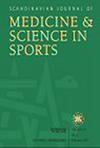Training Strategies of World Tour Cyclists: Periodization and Load Distribution Across a Competitive Season.
IF 3.8
2区 医学
Q1 SPORT SCIENCES
引用次数: 0
Abstract
This study aimed to analyze training strategies, periodization, and load distribution in World Tour professional road cyclists to understand how these factors contribute to performance optimization across a competitive season. Training and racing data from 28 male World Tour cyclists were retrospectively analyzed. Performance variables (e.g., critical power (CP), functional threshold power (FTP)), volume (duration, distance, elevation gain), training load (Edwards' training impulse (eTRIMP), Training Stress Score (TSS), work in kJ), and power- and heart rate-based intensity distribution (low-intensity training (LIT), moderate-intensity training (MIT), high-intensity training (HIT)) were assessed. The season was divided into three distinct phases (pre-season, pre-competitive, competitive) based on individual racing schedules. Physiological variables, including CP, improved significantly in competitive periods compared to training periods (p ≤ 0.01). Competition exhibited greater distance, elevation gain, and load than training (p ≤ 0.001). Volume and load increased progressively across phases, peaking in the competitive phase (p ≤ 0.01), with no significant change between pre-competitive and competitive phases. Intensity distribution remained pyramidal across phases, with progressive increases in HIT percentage toward competition (p ≤ 0.001), and higher HIT percentage in races. Power- and heart rate-based intensity distributions differed significantly in MIT and HIT zones (p ≤ 0.001). World Tour cyclists employ structured training strategies with progressive volume and load increases and intensification within a pyramidal pattern, improving performance for competitive demands and supporting performance across a season.世界自行车巡回赛的训练策略:周期和负荷分布在一个竞争季节。
本研究旨在分析世界巡回赛职业公路自行车运动员的训练策略、周期和负荷分布,以了解这些因素如何在整个竞争赛季中促进表现优化。回顾性分析了28名世界自行车巡回赛男性选手的训练和比赛数据。评估表现变量(如临界功率(CP)、功能阈值功率(FTP))、体积(持续时间、距离、海拔升高)、训练负荷(爱德华兹训练冲量(eTRIMP)、训练压力评分(TSS)、kJ功)以及基于功率和心率的强度分布(低强度训练(LIT)、中强度训练(MIT)、高强度训练(HIT))。赛季根据个人赛程划分为三个不同的阶段(季前赛、赛前、比赛)。与训练期相比,比赛期CP等生理指标有显著改善(p≤0.01)。比赛比训练表现出更大的距离、海拔升高和负荷(p≤0.001)。容量和负荷在各阶段逐渐增加,在竞争阶段达到峰值(p≤0.01),竞争前和竞争阶段之间无显著变化。强度分布在各阶段保持金字塔形,在比赛阶段HIT百分比逐渐增加(p≤0.001),在比赛阶段HIT百分比更高。功率和心率为基础的强度分布在MIT和HIT区有显著差异(p≤0.001)。世界巡回赛自行车手采用结构化的训练策略,在金字塔模式下逐步增加量和负荷,提高比赛要求的表现,并支持整个赛季的表现。
本文章由计算机程序翻译,如有差异,请以英文原文为准。
求助全文
约1分钟内获得全文
求助全文
来源期刊
CiteScore
7.90
自引率
4.90%
发文量
162
审稿时长
3 months
期刊介绍:
The Scandinavian Journal of Medicine & Science in Sports is a multidisciplinary journal published 12 times per year under the auspices of the Scandinavian Foundation of Medicine and Science in Sports.
It aims to publish high quality and impactful articles in the fields of orthopaedics, rehabilitation and sports medicine, exercise physiology and biochemistry, biomechanics and motor control, health and disease relating to sport, exercise and physical activity, as well as on the social and behavioural aspects of sport and exercise.

 求助内容:
求助内容: 应助结果提醒方式:
应助结果提醒方式:


